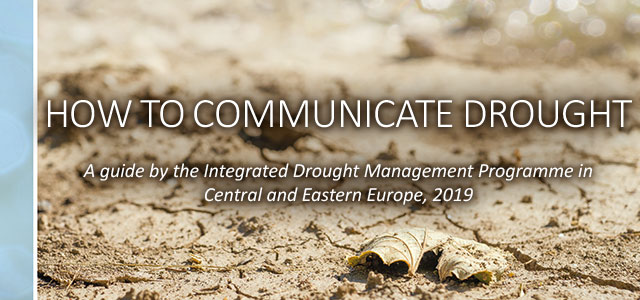In 2013, the Global Water Partnership Central and Eastern Europe (GWP CEE) initiated the Integrated Drought Management Programme (IDMP CEE) within the framework of the joint, global WMO/GWP Integrated Drought Management Programme. The scope of this programme (WMO/GWP, 2011) is to support stakeholders at all levels by providing them with policy and management guidance through the globally coordinated generation of scientific information and sharing best practices and knowledge for integrated drought management.
Rationale
Media has the capacity to raise awareness, change behaviors, mobilize public opinion and resources, as well as to influence policies and set agendas. In order to do this, media needs to be well-informed about the phenomenon of drought, with all its stages and impacts on agricultural productivity, tourism, natural ecosystems, including groundwater and riverine environments. There is also a need to shift the media attention from only covering the impacts of drought after it occurs to communicating timely and efficiently with the public during the entire drought management cycle, which can result in better preparedness. The Guide on How to Communicate Drought offers to bridge the gap between water professionals and the media.
Water professionals have a responsibility to present information to the media that is factual, straight forward, with fewer numbers and statistics, and likely to stimulate media and public interest. Equally, the media need to use their presentation skills to go beyond sensationalism and find ways of arousing deeper public interest in drought so that people are empowered to engage in actions that can avoid many of the serious problems that droughts brings.
How to Communicate Drought
This Guide on How to Communicate Drought will be of value to both water professionals and journalists. For media professionals, the Guide sets out what people really need to know about drought, the steps that professionals are taking to reduce the impacts of drought, and how people can benefit from engaging in reducing the risks. For water professionals the Guide offers experiences of working with the media to communicate drought in ways that increase public interest and engagement. For both, selected case studies demonstrate the many facets of drought and how professionals and the media can work together for the public benefit. The Guide concludes with some principles and good practices to help improve communications between water professionals, the media, and the public.
Training for media
Based on the collected knowledge, expertise and the Guide GWP CEE has developed a training, which complements the Guide aiming to bridge the communications gap between water professionals and journalists. It is designed for the water professionals to improve the way they provide information to the media, and for media professionals to explore ways of arousing deeper public interest in drought so that people are empowered to engage in actions that can avoid many of the serious problems that droughts bring.
For more information and orders, contact us at gwpcee[at]gwpcee.org
